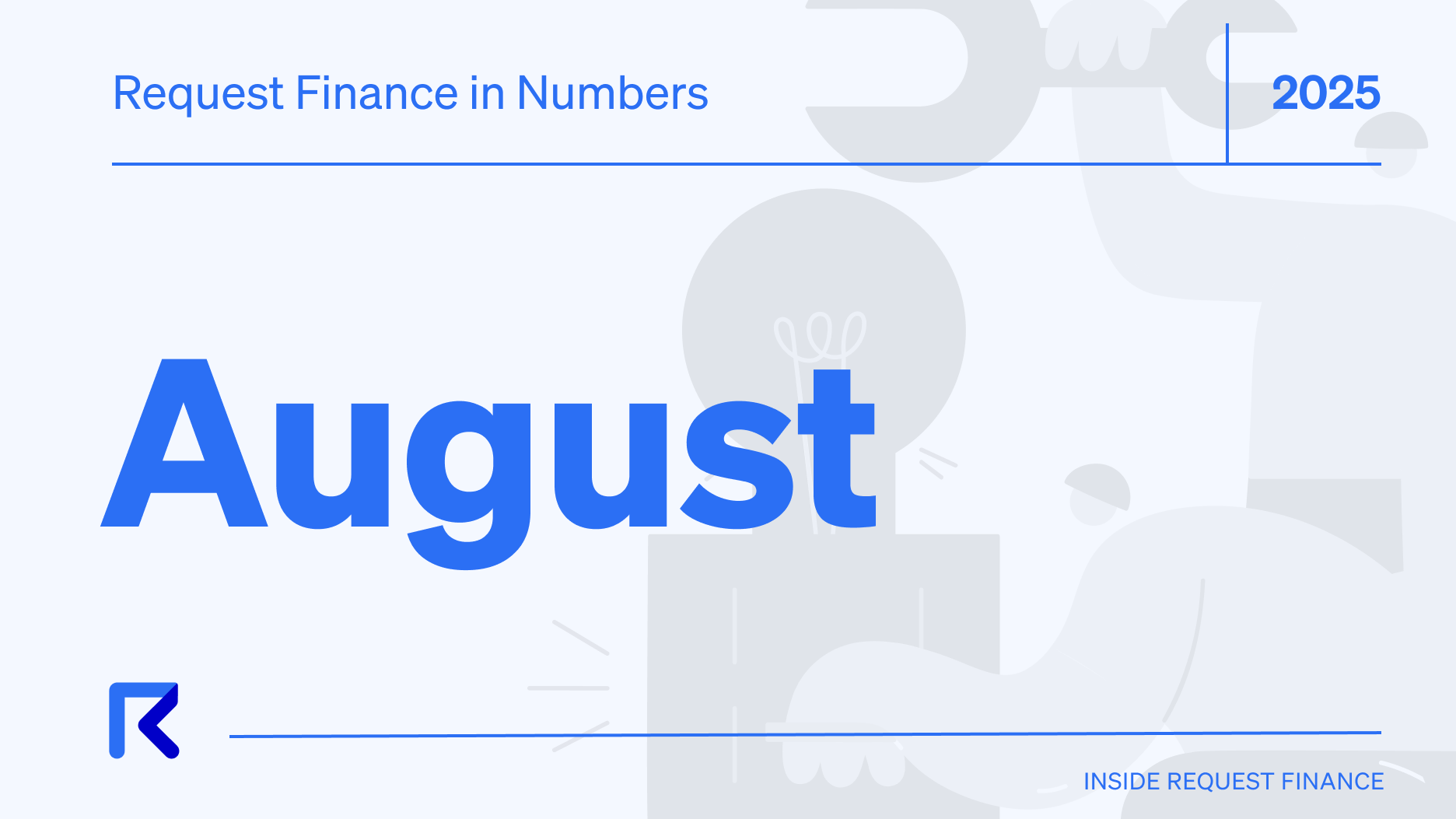Stablecoins: How They Work and What They Mean for Your Business
Learn about the pros and cons of the different types of stablecoins, and what it means for your business.

Cryptocurrencies are increasingly popular among businesses, especially for cross border payments.
A recent survey found that 85% of businesses with more than $1 billion in annual sales see crypto payments as a way to reach new customers, while 77% are using crypto for lower transaction fees.
But one major concern that has hampered their adoption is their extreme volatility.
Amidst the volatility that characterizes many cryptocurrencies, stablecoins have emerged as a crucial financial instrument.
They have all the benefits of blockchain-based currencies, without the volatility.
As businesses increasingly integrate these stablecoins into their financial operations, it’s essential to understand how they work, the types available, and their pros and cons.
Ready to Supercharge Your Crypto Accounting?
Stop wasting time, manually creating journal entries. Automate your accounting now, and enjoy error-free reporting
Learn how to scale your company's crypto & fiat financial operations
Your financial complexities are our specialties. Schedule your free consultation today and discover how Request Finance can transform your financial operations
Simplify crypto and fiat financial operations today
Rely on a secure, hassle-free process to manage your crypto invoices, expenses, payroll & accounting.
What Are Stablecoins?
Stablecoins, as the name suggests, are a class of cryptocurrencies designed to maintain price stability.
Unlike highly volatile cryptocurrencies, stablecoins are pegged to the price of more stable assets like fiat currencies, or commodities like gold.
This reduced volatility makes them ideal for enterprise payments, or as cash management instruments in corporate treasuries.
The pegging mechanisms vary, but they all share a common goal: ensuring that their value remains relatively constant, thereby minimizing the price fluctuations typically associated with the crypto market.
What are the key differences in stablecoin designs, and how do they matter for enterprises? Below, we explore three primary types: fiat-collateralized, crypto-collateralized, and algorithmic stablecoins.
1. Fiat-Collateralized Stablecoins
The most prevalent type, fiat-collateralized stablecoins, are backed by reserves of fiat currency.
For instance, if a stablecoin is pegged to the US Dollar, the issuer must hold a corresponding amount of USD to uphold the stablecoin's value.
Prominent examples include Tether (USDT) and USD Coin (USDC). Tether, the most widely recognized and utilized stablecoin, is tethered to the US Dollar, with each USDT token supposedly backed by one USD held in reserve. Tether is commonly used as a trading pair on cryptocurrency exchanges and as a means of transferring value between different platforms.
USD Coin, a project from Circle and Coinbase, is also pegged to the USD. The companies behind USDC claim to maintain a 1:1 collateralization ratio, providing regular attestation reports from top auditing firms to ensure transparency and trust.
2. Crypto-Collateralized Stablecoins
In contrast, crypto-collateralized stablecoins are backed by other cryptocurrencies.
These stablecoins operate through smart contracts, and users need to lock up a certain amount of cryptocurrency as collateral. The system then generates an equivalent value of stablecoins.
Examples include Dai (DAI) and sUSD (sUSD). Dai, operating on the MakerDAO platform, is backed by various cryptocurrencies, primarily Ether (ETH). The system allows users to lock up their ETH as collateral and generate Dai tokens, which they can later unlock by repaying the locked ETH.
sUSD, is the stablecoin of the Synthetix platform, which enables users to create synthetic assets on the Ethereum blockchain. It is backed by SNX, the native utility token of the Synthetix platform, which users stake as collateral to mint sUSD.
3. Algorithmic Stablecoins
Unlike the above two, algorithmic stablecoins operate without direct collateral backing. They depend on algorithms to adjust their supply, ensuring their value remains stable.
When the price of the stablecoin rises, the algorithm mints new coins to reduce the price.
Conversely, if the price falls, the algorithm buys back stablecoins to increase their value. While this model theoretically maintains stability, it can be affected by market sentiment and user adoption.
Notable algorithmic stablecoins include Ampleforth (AMPL) and Frax (FRAX). Ampleforth adjusts its supply based on demand as mentioned above, giving an elastic supply model that aims to maintain a stable price of approximately $1.
Frax however, takes an interesting approach where it combines elements of both algorithmic and collateralized stablecoins. It uses a fractional-algorithmic approach, meaning that it’s partially backed by collateral (USDC) while also utilizing algorithms to maintain its peg to the US Dollar.
Pros and Cons of Different Stablecoins for Businesses
Each type of stablecoin carries advantages and potential challenges for businesses. Here, we explore the pros and cons of each stablecoin type concerning businesses:
1. Fiat-Collateralized Stablecoins
Tether has faced its share of controversies, with concerns over its actual fiat reserves and allegations of market manipulation.
However, it remains a dominant stablecoin in the crypto market, with a massive daily trading volume of nearly $18 billion, indicating widespread adoption and usage.
USD Coin, on the other hand, has gained a reputation for its regulatory compliance efforts and the transparency it provides through regular audits. Its growing popularity further emphasizes the demand for fiat-collateralized stablecoins as a reliable means of preserving value.
Pros:
Transparency and Trust: Fiat-collateralized stablecoins offer a high level of transparency as issuers are required to hold an equivalent amount of fiat currency in reserve. This transparency instills trust among businesses and users.
Stability: With their value directly tied to established fiat currencies, businesses can confidently conduct transactions without worrying about price fluctuations.
Widely Accepted: Fiat-collateralized stablecoins are widely accepted across various cryptocurrency exchanges and platforms, making them easily accessible to businesses to on-ramp and off-ramp.
Cons:
Centralization: These stablecoins depend on centralized entities to manage the reserves, which can be a point of concern for those seeking complete decentralization.
Auditing Requirements: Ensuring proper collateralization requires regular auditing, which can be resource-intensive and time-consuming for both issuers and businesses.
2. Crypto-Collateralized Stablecoins
Crypto-collateralized stablecoins are celebrated for their decentralized nature and the ability to operate without direct reliance on central entities.
The fluctuating prices of the underlying collateral, however, can expose these stablecoins to volatility.
In times of extreme market turbulence, the value of the collateral may drop significantly, potentially leading to under-collateralization.
The MakerDAO platform experienced such an issue during the "Black Thursday" event in March 2020, when the rapid decline of Ether's price led to a system-wide liquidation of collateralized positions.
Pros:
Decentralization: Crypto-collateralized stablecoins often embrace decentralized principles, which gives companies security and autonomy of their financial assets.
The Chinese government has, on several occasions, been known to freeze or seize assets of companies and individuals for sudden changes in regulations.
Payment processors like PayPal have, in the past, frozen accounts based on what they perceive as violations of their terms of service. It even authorized a $2,500 deduction from a user’s account for engaging in what the company considers ‘misinformation’
For a company, the risk isn't just about the immediate loss of funds, but might find its assets frozen just when it needs liquidity the most. Decentralization offers a layer of protection against sudden political upheavals or changes in policy that might jeopardize your assets.
No Banking Dependencies: As these stablecoins don't rely on fiat reserves, they eliminate the need for banking partnerships, reducing bureaucracy and potential regulatory hurdles.
Cons:
Volatility Risk: Crypto-collateralized stablecoins are exposed to the price fluctuations of the underlying cryptocurrencies, which can result in instability.
Overcollateralization: To ensure stability, a significant amount of cryptocurrency is often locked up as collateral, which can tie up a considerable portion of capital for businesses.
3. Algorithmic Stablecoins
Algorithmic stablecoins offer an intriguing approach to maintaining stability without relying on direct collateral.
However, their effectiveness can be influenced by factors like market sentiment and user adoption. The price dynamics of algorithmic stablecoins can sometimes lead to periods of instability, and in extreme cases, they may temporarily deviate significantly from their intended peg.
Users and businesses should carefully consider the mechanisms of these stablecoins and assess their risk appetite before engaging with them.
Pros:
Decentralization: Algorithmic stablecoins can achieve a higher level of decentralization as they don't rely on centralized collateral reserves.
Innovation Potential: This model opens up possibilities for unique decentralized finance (DeFi) applications, potentially leading to innovative financial solutions for businesses.
Cons:
Complexity: The algorithms governing these stablecoins can be complex, making it challenging for businesses to grasp their underlying mechanisms fully.
Market Sentiment Vulnerability: Algorithmic stablecoins can be influenced by market sentiment, potentially leading to price fluctuations despite the absence of direct collateral.
Implementing Stablecoin Payments to Your Web3 Business
Depending on your specific needs and risk tolerance, you must carefully choose the most suitable stablecoin for your financial operations.

At Request Finance, USDC stands out as the cryptocurrency of choice, accounting for over 33% of all crypto payments made predominantly by our enterprise clientele.
USD-pegged stablecoins remain a favored option for enterprise crypto payments, representing 57% of all crypto payments processed.
As one of the largest crypto payroll solutions with nearly $350 million in total crypto payments volume, Request Finance supports over 10 types of stablecoins to help Web3 businesses send and receive stablecoins easily.
Learn how you can simplify and automate your stablecoin payments with Request Finance here.
Crypto finance tips straight to your inbox
We'll email you once a week with quality resources to help you manage crypto and fiat operations
Trending articles
Get up to date with the most read publications of the month.
Our latest articles
News, guides, tips and more content to help you handle your crypto finances.











